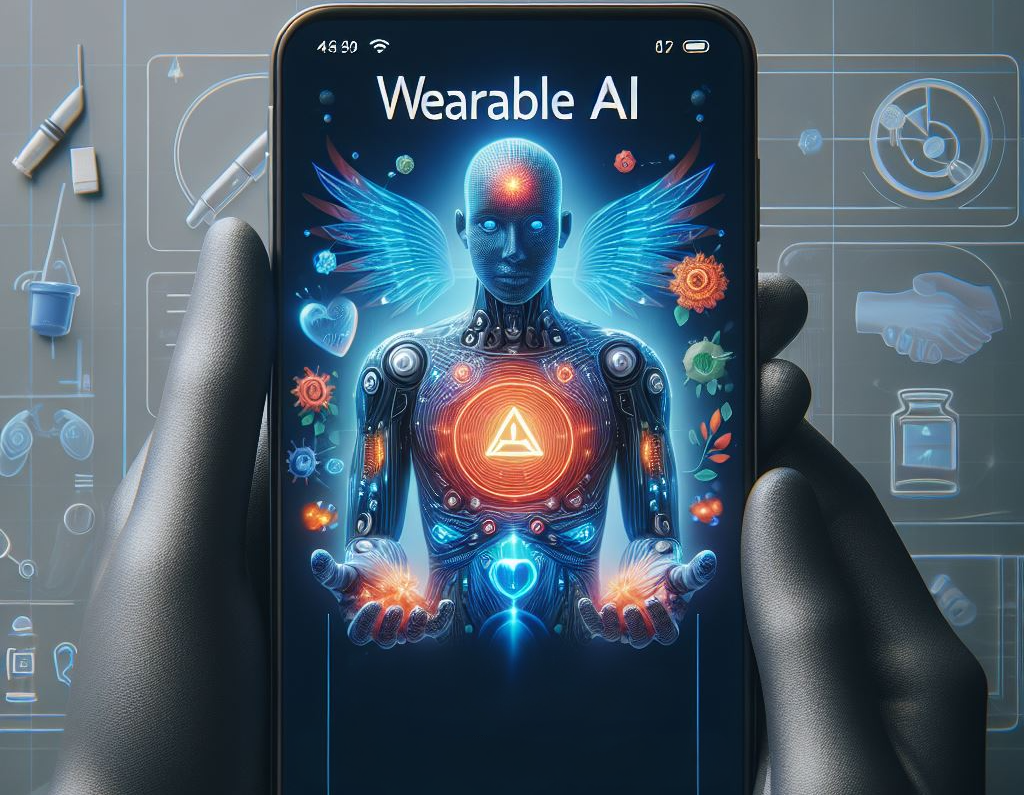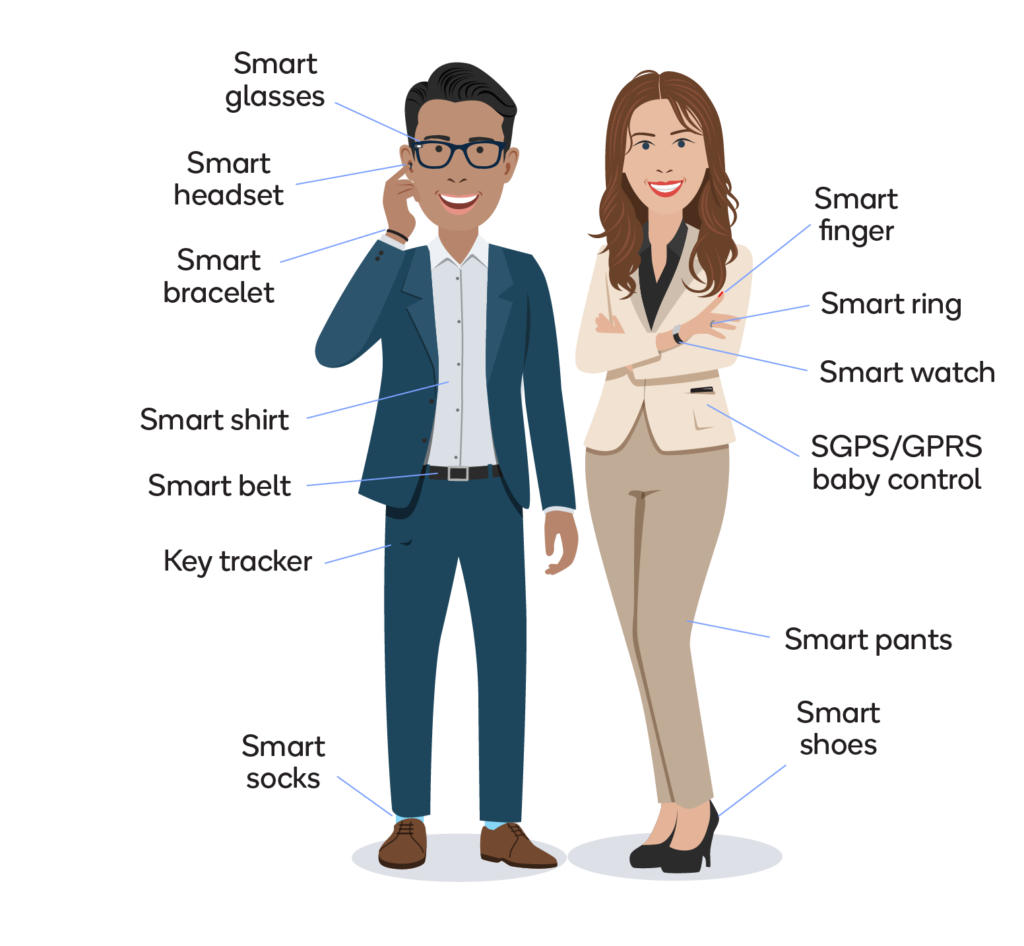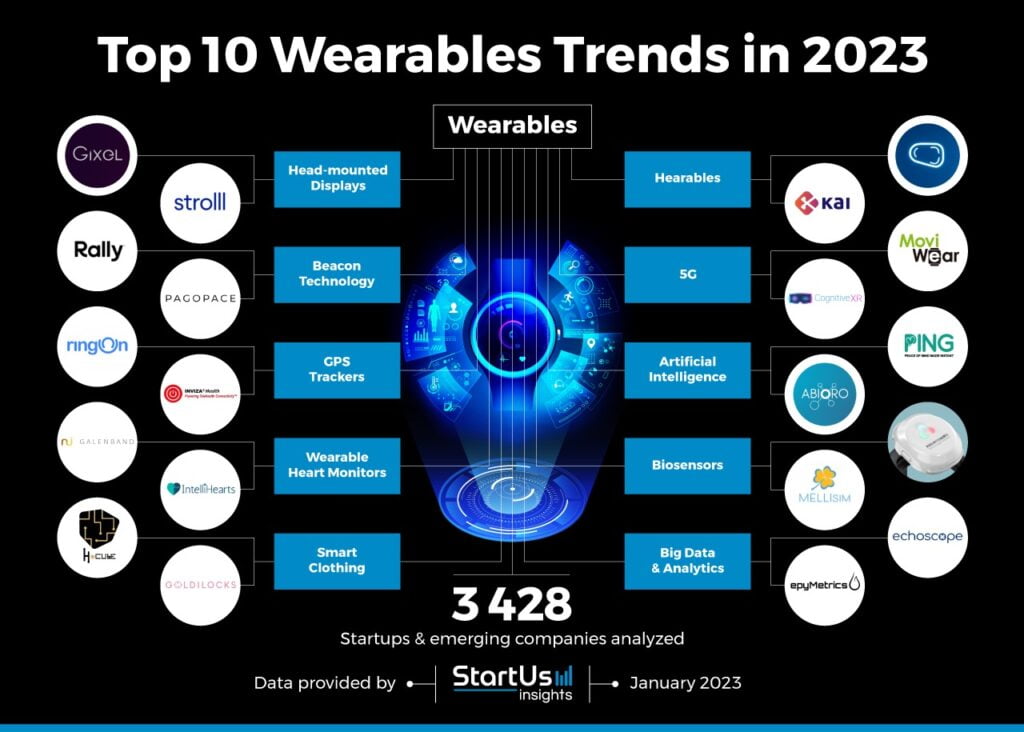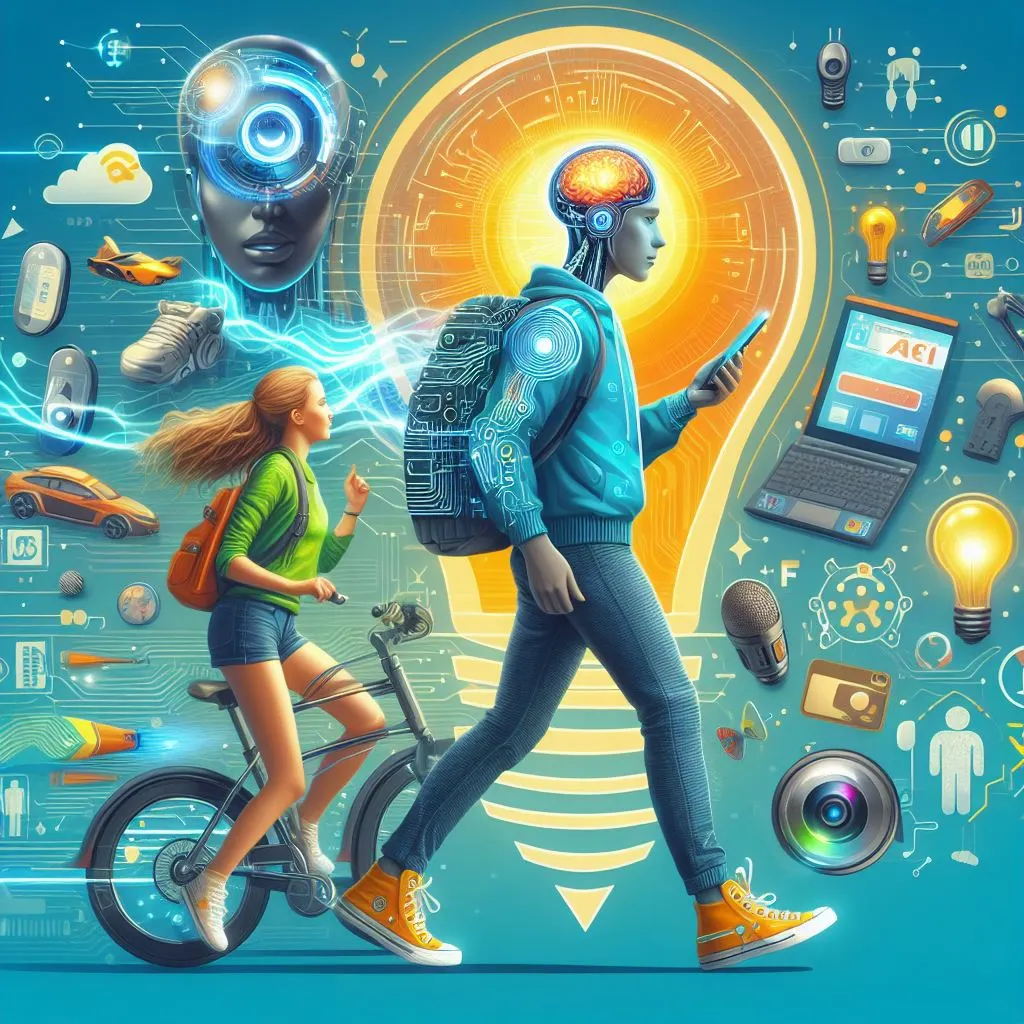Table of Contents
In the fast-paced world of technology, wearable AI has emerged as a revolutionary force, impacting how we live, work, and interact. Remember strapping on clunky virtual reality headsets to escape into a digital world? Well, move over VR, because the next tech revolution is happening right on your body. Wearables are no longer a futuristic fantasy; it’s woven into our everyday lives, from smartwatches whispering workout guidance to glasses displaying historical tidbits.
What is Wearable AI?
Wearable AI goes beyond smartwatches and fitness trackers. It’s about embedding tiny, intelligent processors and sensors into devices we wear every day, from bracelets to clothing to glasses. These devices collect data about our bodies, environment, and activities, and then use AI algorithms to analyze and interpret it, unlocking a new level of personalization and assistance.
The Remarkable Evolution of Wearable AI

The journey of Wearable AI is a captivating tale of progress. Starting with basic fitness bands, the technology has evolved into sophisticated devices capable of complex functions. Today, these gadgets are not just accessories but vital components of our digital ecosystem, offering unparalleled convenience and insights. This evolution signifies a leap in how we utilize technology for personal betterment.
Key Features and Benefits
From Health Hacks to Life Hacks: A Peek into Future Applications
Wearable AI isn’t just about counting calories anymore. Imagine:
• Health Guardians: Smartwatch detecting early signs of illness, predicting heart attacks, monitoring blood sugar in real-time, empowering to take control of our well-being.
• Productivity Powerhouses: Earbuds translating documents on the fly, Glasses displaying relevant information during presentations, wearable device optimizing our work schedule based on our energy levels – all to boost your productivity.
• Learning Accelerators: Language learning earbuds adapting to our pronunciation mistakes, or glasses overlaying historical context on ancient buildings, turning every walk into a personalized learning adventure.
• Frictionless Living: Adjusting our smart home environment based on our presence, ordering groceries on running low, or hailing a cab when we’re running late – making our life a seamless symphony of convenience.

Wristband as Your Brain Trust: Smart Assistants with Superpowers
Remember having to pull out your phone for every little thing? Wearable AI assistants are here to change that. Imagine talking to your watch to book a restaurant, schedule a meeting, or get real-time updates on your commute. But here’s the kicker: these AI assistants are context-aware. They anticipate your needs based on your location, schedule, and even your emotional state, offering help before you even ask.
Beyond Wellness: Your Wearable AI Coach and Guardian
It can be your personal coach, pushing you to reach your fitness goals or providing personalized feedback on your workout form. It can also be your guardian, detecting falls or sending emergency alerts if you’re in danger. Imagine a world where your wearable intervenes before a health crisis, or sends help if you’re lost or injured.
Most popular types of wearable AI devices in the market
- Smart Watches: These devices are prevalent in the consumer electronics segment and are widely used for health and fitness tracking, as well as for entertainment and multimedia applications
- Smart Glasses: Smart glasses are gaining popularity, especially in industrial and enterprise applications, for tasks such as remote assistance, training, and hands-free operation
- Smart Earwear: AI-powered ear wearables, such as AI hearing aids, are sophisticated examples of wearable technology that are becoming increasingly popular
- Smart Clothing: This includes intelligent garments and accessories that integrate AI technologies to monitor physiological signals, provide personalized comfort, and track environmental conditions
- Fitness Trackers: These are widely used for health and fitness monitoring and are a prominent use case for wearable technology
- Healthcare Wearables: These devices are increasingly used in healthcare for monitoring vital signs, providing real-time feedback, and predicting potential health risks
- Industrial Wearables: In the industrial sector, autonomous wearable devices are being used to assist users and provide ease and convenience in accomplishing tasks.

Promising Companies in the Wearable AI Market

- Apple: Apple Watch is a popular wearables maker that offers advanced health monitoring features such as ECG, blood oxygen, and fall detection
- Fitbit: Fitbit offers a range of wearables focused on health and fitness tracking, incorporating AI for advanced monitoring and analysis
- Garmin: Garmin offers a variety of wearables focused on fitness and outdoor activities, integrating AI for enhanced user experiences
- Google: Google is known for its development of AI-powered smartwatches and other wearable devices
- Huawei: Huawei offers smartwatches and other wearable AI devices with advanced AI capabilities
- Amazon: Amazon offers a range of AI-powered devices and services, including wearable devices
- Sony: Sony is involved in the development of AI-powered wearable devices
- Humane: Humane has developed the AI Pin, a mini-calculator-like device that can be fixed to clothing during fashion events. These companies are at the forefront of innovation in the wearable AI market, driving the development of advanced AI-powered wearable devices for various applications, including health and fitness, consumer electronics, and fashion.
Future of AI Wearable Market
The future of the AI wearable market is expected to be characterized by significant growth and transformation. According to various sources, the global wearable AI market size is expected to reach USD 221,351.41 million by 2031, growing at a CAGR of 26.3% during the forecast period (2023–2031). The market is witnessing significant growth due to the exponential rise of emerging technologies, such as artificial intelligence (AI), and 5G smartphone adoption. The increased adoption of smart wearables enabled with AI is due to the advancement of IoT, integration of wireless technology, and the increasing popularity of smartwatches among millennials and Gen Z.
Challenges and Ethical Considerations
With great technology comes great responsibility. Despite its benefits, Wearable AI faces challenges, particularly in privacy and data security. The ethical implications of constant monitoring and data collection are significant. Manufacturers and users alike must navigate these issues carefully, ensuring that personal data is protected and used responsibly. Balancing innovation with ethical considerations will be crucial for the sustainable growth of Wearable AI.
Conclusion
Wearable AI is more than a technological trend; it’s a lifestyle revolution. As we embrace these intelligent devices, we open doors to a future where technology enhances every aspect of our lives. Whether for health monitoring, fitness tracking, or simply staying connected, Wearable AI is an exciting glimpse into the future. As technology continues to evolve, the possibilities are limitless, promising a smarter, more connected world.
So, are you ready to ditch the bulky tech and embrace the revolution happening right on your body? The future of wearable AI is here, and it’s time to strap in for the ride.
This blog post is just a starting point. Feel free to explore specific applications, share your own experiences, and keep the conversation going in the comments below. Let’s unlock the incredible potential of wearable AI together.
Discover more from WireUnwired Research
Subscribe to get the latest posts sent to your email.




